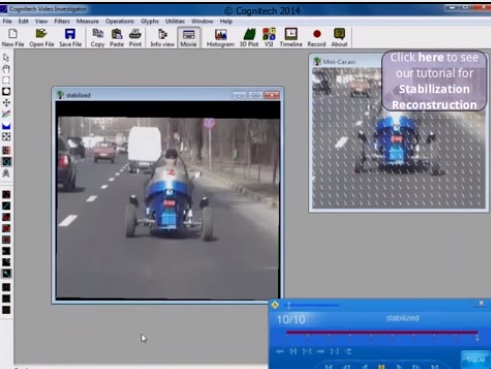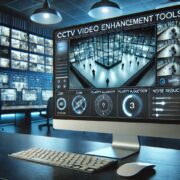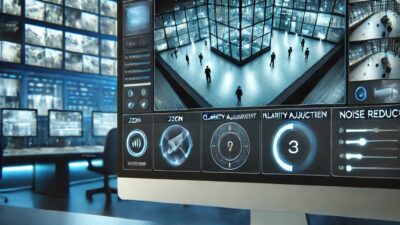In an era where the battle for human rights is more critical than ever, the advent of cutting-edge technology has transformed how we document, analyze, and ultimately address violations. Investigative journalism and human rights video documentation stand at the forefront of this revolution, leveraging forensic video analysis software and hardware to uncover the truth and hold perpetrators accountable.
The Role of Human Rights Video Documentation
Human rights video documentation serves as a powerful tool in exposing injustices and amplifying the voices of victims. By capturing real-time evidence of violations, activists and journalists can provide irrefutable proof that compels action from the global community. This documentation not only raises awareness but also serves as a vital resource for legal proceedings, policy-making, and historical records.
The Emergence of Forensic Video Analysis
Forensic video analysis is a specialized field that involves the meticulous examination of video footage to extract crucial details. This process can include enhancing image quality, identifying individuals, and measuring distances at crime scenes. With advancements in software and hardware, forensic video analysts can now achieve unprecedented levels of accuracy and clarity.
Key Tools in Forensic Video Analysis:
- CCTV Surveillance Analysis: Modern software can analyze hours of CCTV footage, identifying patterns and anomalies that might go unnoticed by the human eye. This capability is invaluable in piecing together events and corroborating witness statements.
- Crime Scene Measurement Tools: These tools allow analysts to create precise reconstructions of crime scenes. By measuring distances and angles captured in the footage, investigators can better understand the sequence of events and the positioning of suspects and victims.
The Synergy Between Investigative Journalism and Video Analysis
Investigative journalism thrives on uncovering hidden truths and holding power to account. When combined with forensic video analysis, journalists can present compelling stories backed by indisputable evidence. This synergy has led to groundbreaking reports that have brought down corrupt officials, exposed human rights abuses, and sparked significant policy changes.
Case Studies in Video-Driven Investigations
- Exposing Police Brutality: In numerous instances, video footage has been instrumental in exposing cases of police brutality. Investigative journalists have used forensic video analysis to enhance and clarify footage, ensuring that every detail is visible. These videos have been pivotal in sparking public outcry and demanding justice for victims.
- Documenting War Crimes: In conflict zones, video documentation serves as a lifeline for those seeking to expose war crimes. Journalists and human rights organizations use sophisticated tools to verify the authenticity of footage and analyze the context, providing irrefutable evidence of atrocities.
The Technology Behind the Transformation
The technology driving this transformation is both sophisticated and accessible. Here are some of the key components:
Software Solutions
- Image Enhancement Software: These tools can enhance the quality of footage, making it possible to discern details that would otherwise be lost.
- Motion Detection Algorithms: Advanced algorithms can detect and highlight motion in video footage, allowing analysts to focus on relevant sections quickly.
- Facial Recognition Technology: This technology can identify individuals captured in footage, even in crowded or low-quality video.
Hardware Innovations
- High-Resolution Cameras: Modern surveillance cameras provide high-resolution footage that is crucial for detailed analysis. These cameras can capture minute details, including facial features and license plates, even from a distance.
- Portable Crime Scene Measurement Tools: These tools can be brought to any location, allowing investigators to measure and document crime scenes accurately. Devices such as 3D scanners and laser measurement tools have revolutionized how scenes are reconstructed.
The Impact on Human Rights Advocacy
The integration of forensic video analysis into human rights advocacy has far-reaching implications. It not only strengthens the credibility of investigations but also empowers activists and journalists to pursue justice with greater confidence. By providing concrete evidence, these technologies help to dismantle the walls of denial and impunity often erected by perpetrators of human rights violations.
Challenges and Future Directions
While the benefits are immense, the field of forensic video analysis also faces challenges. Ensuring the authenticity of footage is paramount, as manipulated videos can undermine the credibility of investigations. Additionally, there is a need for continuous training and updating of skills among analysts to keep pace with technological advancements.
Looking forward, the future of human rights video documentation and investigative journalism appears bright. Innovations such as artificial intelligence and machine learning promise to enhance the capabilities of forensic video analysis further, making it even more efficient and reliable. As these technologies evolve, so too will the ability of journalists and human rights defenders to expose truth and advocate for justice.
Contact Us
For those interested in learning more about forensic video analysis software and hardware, including CCTV surveillance analysis and crime scene measurement tools, we invite you to contact us. Our team is dedicated to providing the latest technology and expertise to support your efforts in Investigative Journalism Video Analysis and human rights advocacy.





Comments